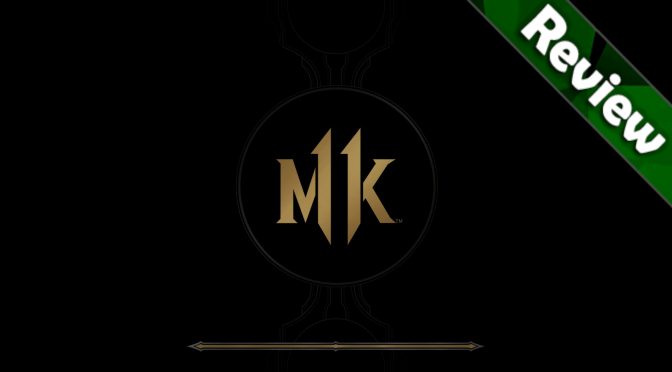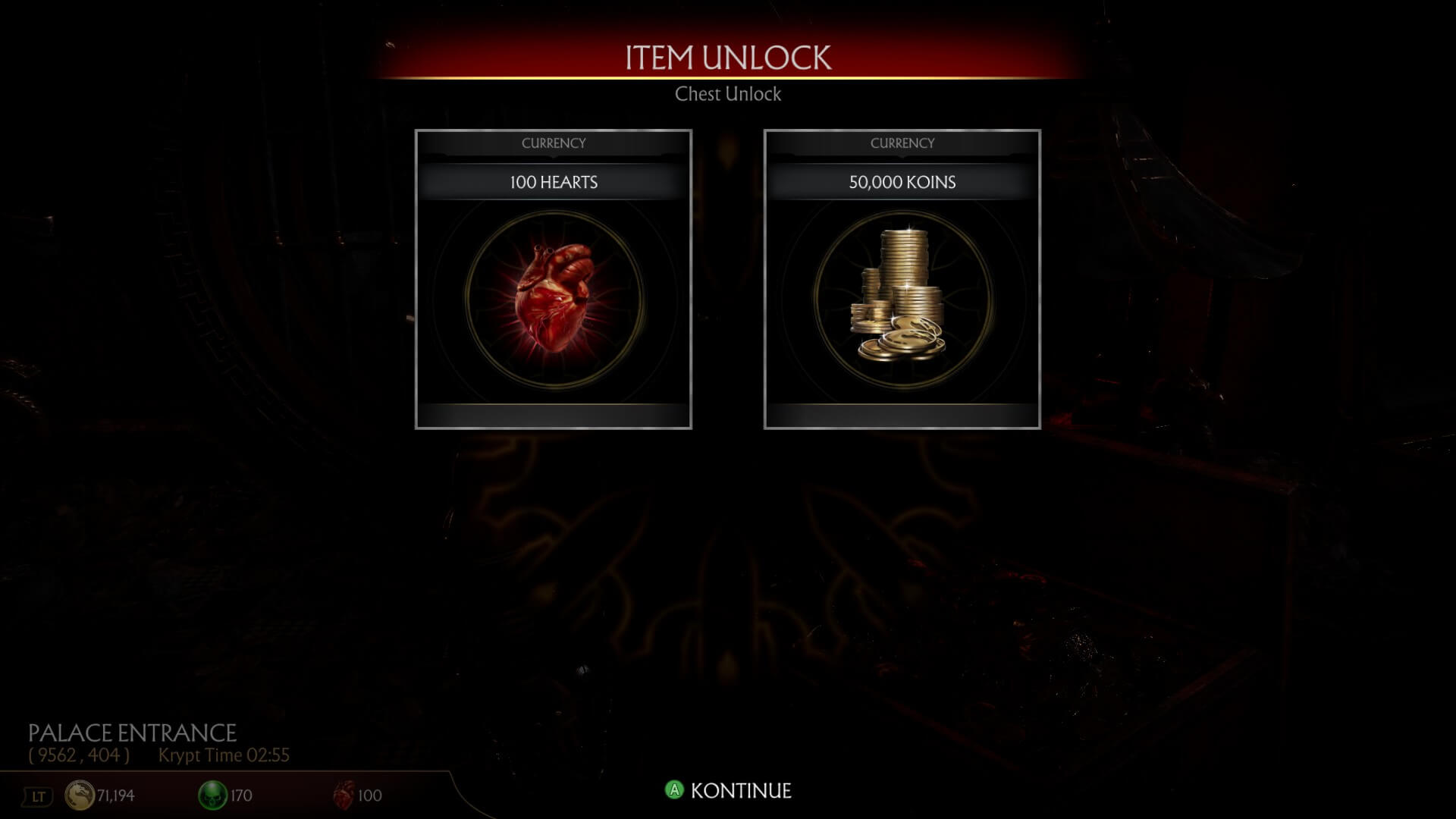Mortal Kombat represents more than a game: it has taken on something close to a counterculture within our industry. It is an I.P. that has consistently laughed in the face of censorship boards, and has never compromised on delivering the unfiltered carnage of close combat. In fact, this franchise is literally (partly) responsible for why the ESRB rating system exists today.
This goriness is not just for looks of course – it is also about skill. The real genius of Mortal Kombat’s formula has always been about demonstrating the player’s fighting ability through how sadistically they can annihilate their opponent. You don’t just K.O. an opponent in this game; you FINISH THEM!
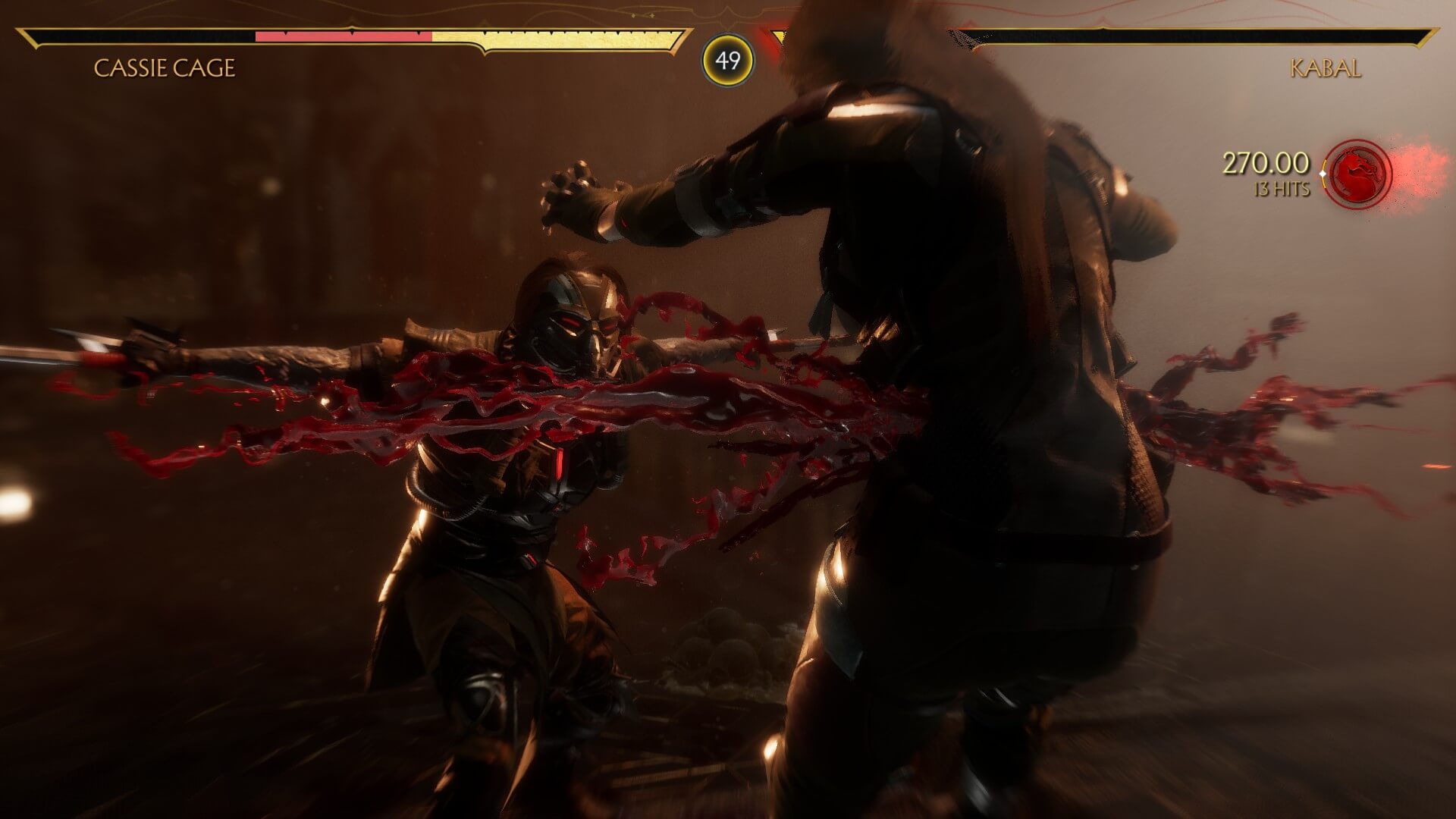
I am quite pleased to report that this 27-year-old spirit of Mortal Kombat is alive and well within the eleventh arrival. Let’s not beat around the bush here: This is essentially the perfect fighting game, and players and pros alike will surely regard this entry as one of the best this series has ever produced. Mortal Kombat 11 not only includes every modern convention that works within its genre, but the game also stays mindful of the old-school novelties that have cemented the I.P. in gaming culture.
Time and time again
In the single-player ‘kampaign’, Earthrealm yet again faces a threat of apocalyptic proportions. The story opens with a now corrupted Raiden (see MK XL) decapitating the elder god Shinnok as a message to anyone who dares to threaten his domain. This was a most serious error in judgement as Shinnok turns out to be the son of a new character, Kronika – the guardian of time itself.
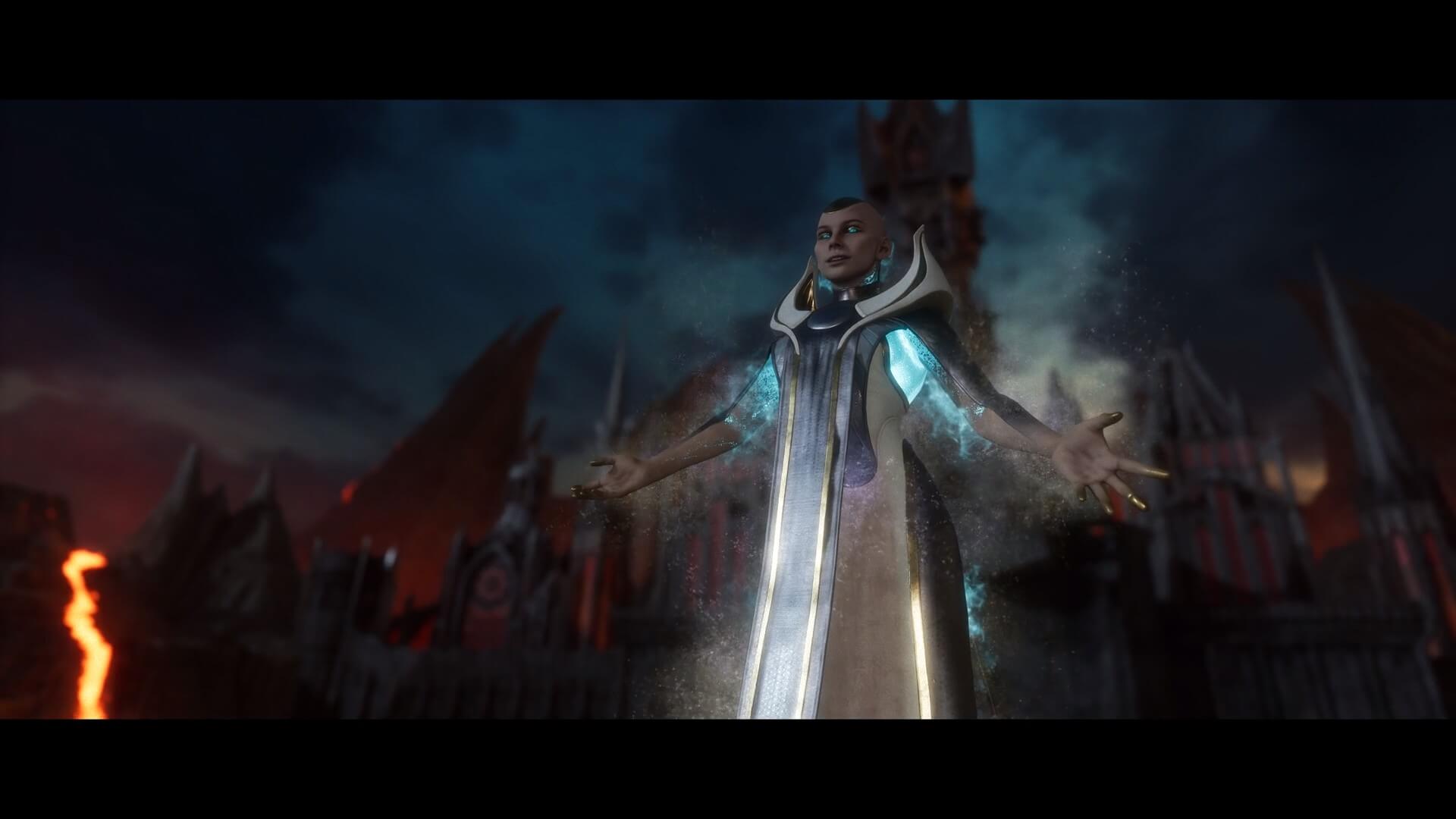
Needless to say, Kronika is rather unhappy not just about her son being reduced to the usefulness of a bowling ball, but also due to the balance of good and evil being thrown out of whack. She vows to restore an equilibrium in the timeline up to the events of her son’s beheading, but is also aware that Raiden and the Earthrealm gang could still present a thorn in her regardless.
Kronika therefore merges past with present , and teleports an army of the six realms’ most formidable villains (like Baraka and Shao Kahn) into the time line as her insurance policy. As per usual, the player will represent the fight for Earthrealm’s fate from the perspective of Johnny Cage, Kotal Kahn, Kung Lao, and other classic and contemporary characters.
I get that the whole time travel motif has been done to death, but thankfully the team at NetherRealm Studios have shown their practiced hand at storytelling. They have wisely used the concept of temporal mischief to reinvigorate and re-imagine some classic fighters from Mortal Kombat’s history. The story is really just one of several reflections of the ‘old-school meets new-school’ theme which is a clear throughout the entire game.
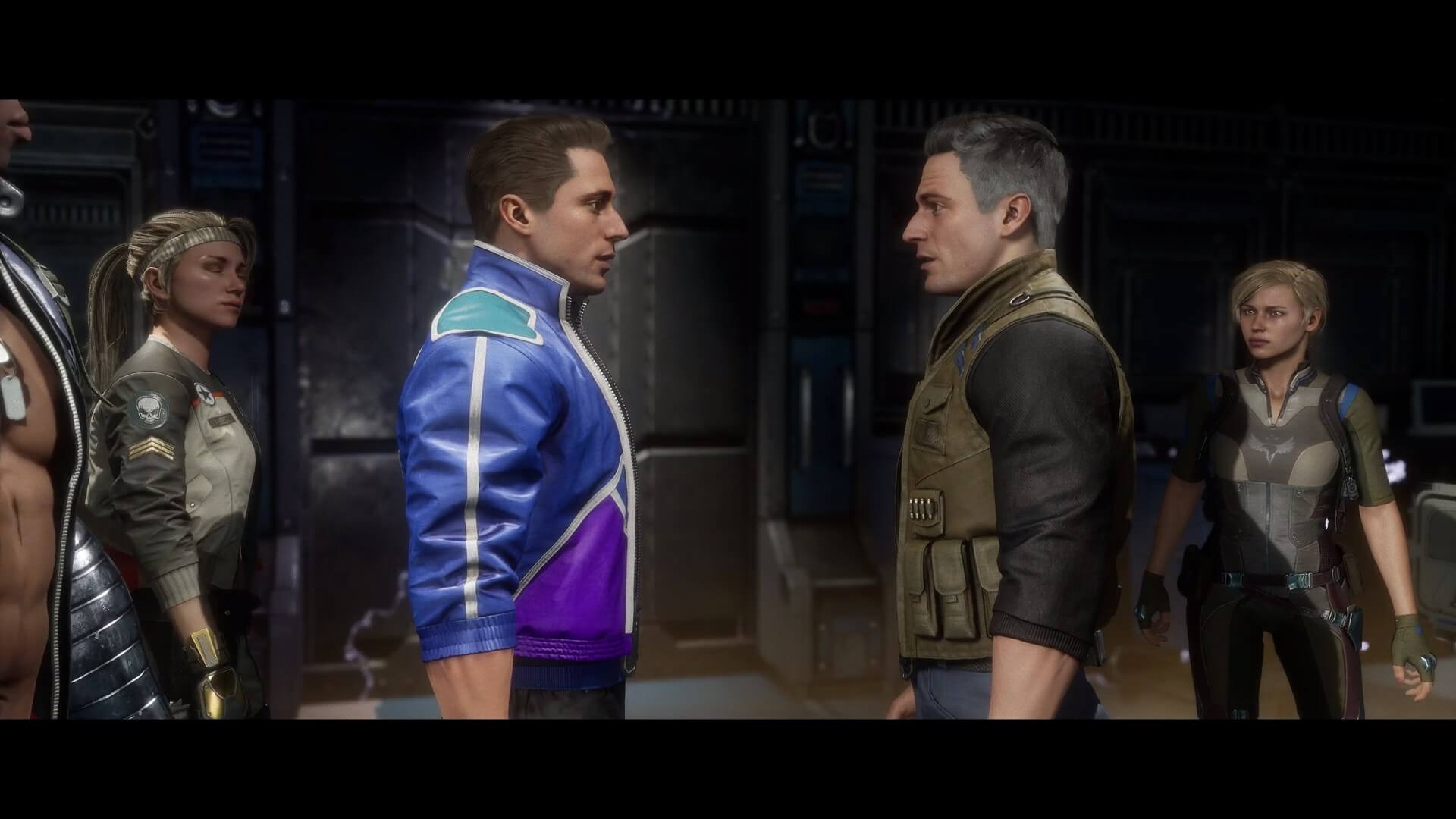
This makes for a surprisingly interesting plot with exciting and unexpected alliances forming or breaking between characters from different time periods (because their major clashes haven’t happened yet). More than that, the developers set up the opportunity to introduce characters like Cetrion and Geras who have fighting abilities centred on the manipulation of time.
It feels like the narrative really oozes a kind of cinematic quality that would bring sweat to the brow of Marvel Studios. The combination of excellent graphics, captivating voice acting, and the return of favourite characters will most definitely have new fans engrossed, and old fans spiralling into nostalgia.
In with the old, out with the new
Objectively speaking, Mortal Kombat 11 plays it extremely safe. This game demonstrates the old adage that players are bound to enjoy what lies in their comfort zone, and it is not necessary for sequels to reinvent the wheel. Instead, MK 11 goes for the ‘if it ain’t broke don’t fix it, but make it a whole lot prettier’ approach.
Indeed, MK 11 could perhaps be summarised as a tweaked and streamlined Mortal Kombat XL, but the strategic albeit small changes to the core formula do just enough to revise the experience for long-time players. Things are better rather than new, and I am actually very happy with that.
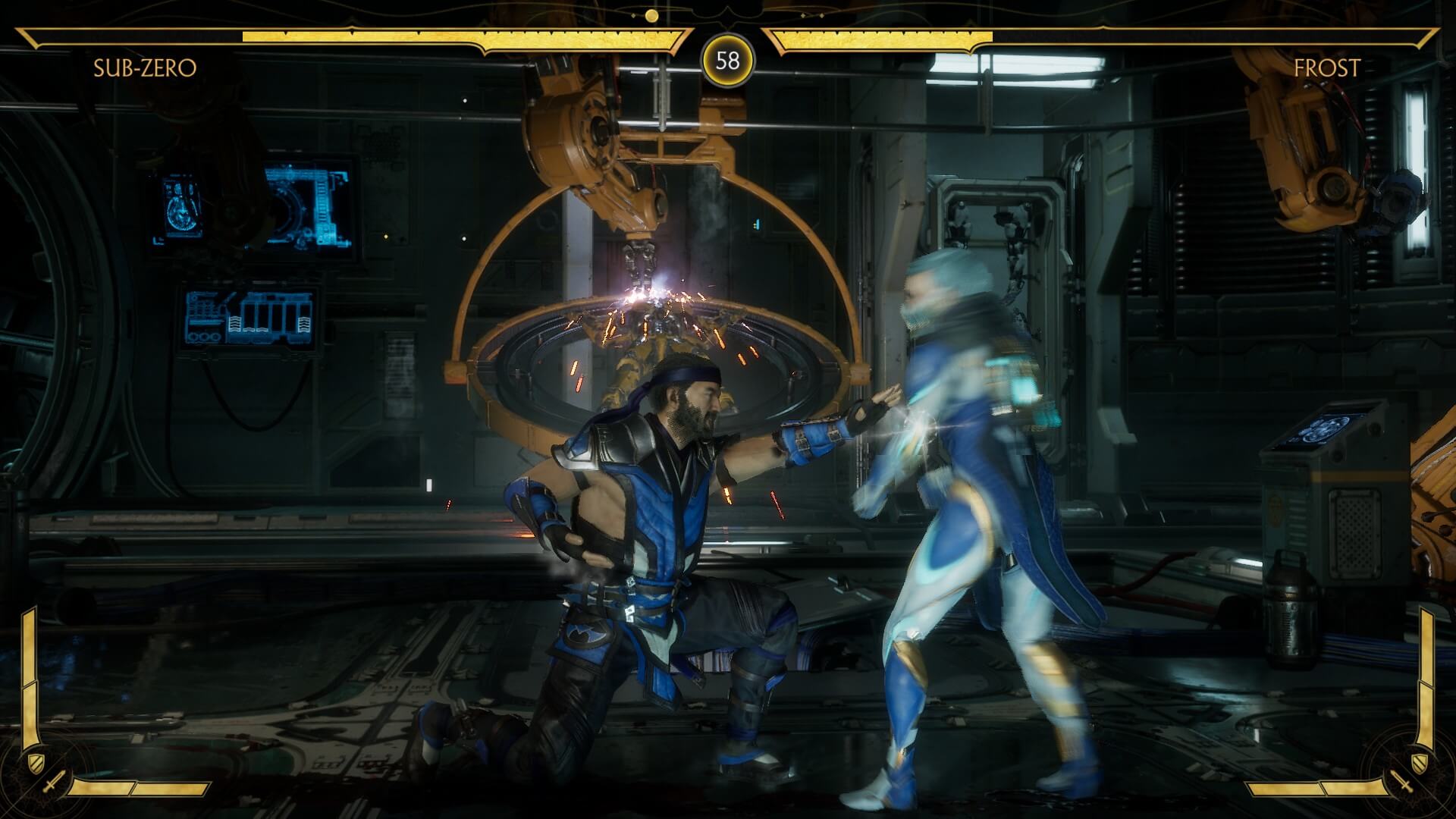
Aside from the single player campaign, the ‘Klassic Towers’ mode makes a return in which the player must defeat a sequence of opponents as opposed to just a once off fight. Except for infinite modes, these always end with Kronika as the final boss, and defeating her gets you a brief cut scene that fills in some story details. These are specific to the character you happen to be playing much like Tekken or Street Fighter.
You will not find the ‘Living Towers’ of the previous installment as Netherrealm has ditched this mode in favour of the ‘Towers of Time’. These differ from Klassic Towers since opponents get more challenging as you make your way to the top, and players are also permitted to activate certain modifiers (unlocked as loot) either for one match, or for the duration of the entire tower.
As an example, you can assign Jade one or two of Cyrax’s cyber webs to fire at her opponent, stunning them momentarily. Alternatively, the match might have a vampire modifier in which the player’s health bar drains constantly to the opponent’s, so it is best to finish the match sooner rather than later. These towers have proven to be savagely punishing, but at least the game is generous in rewards for completing them.
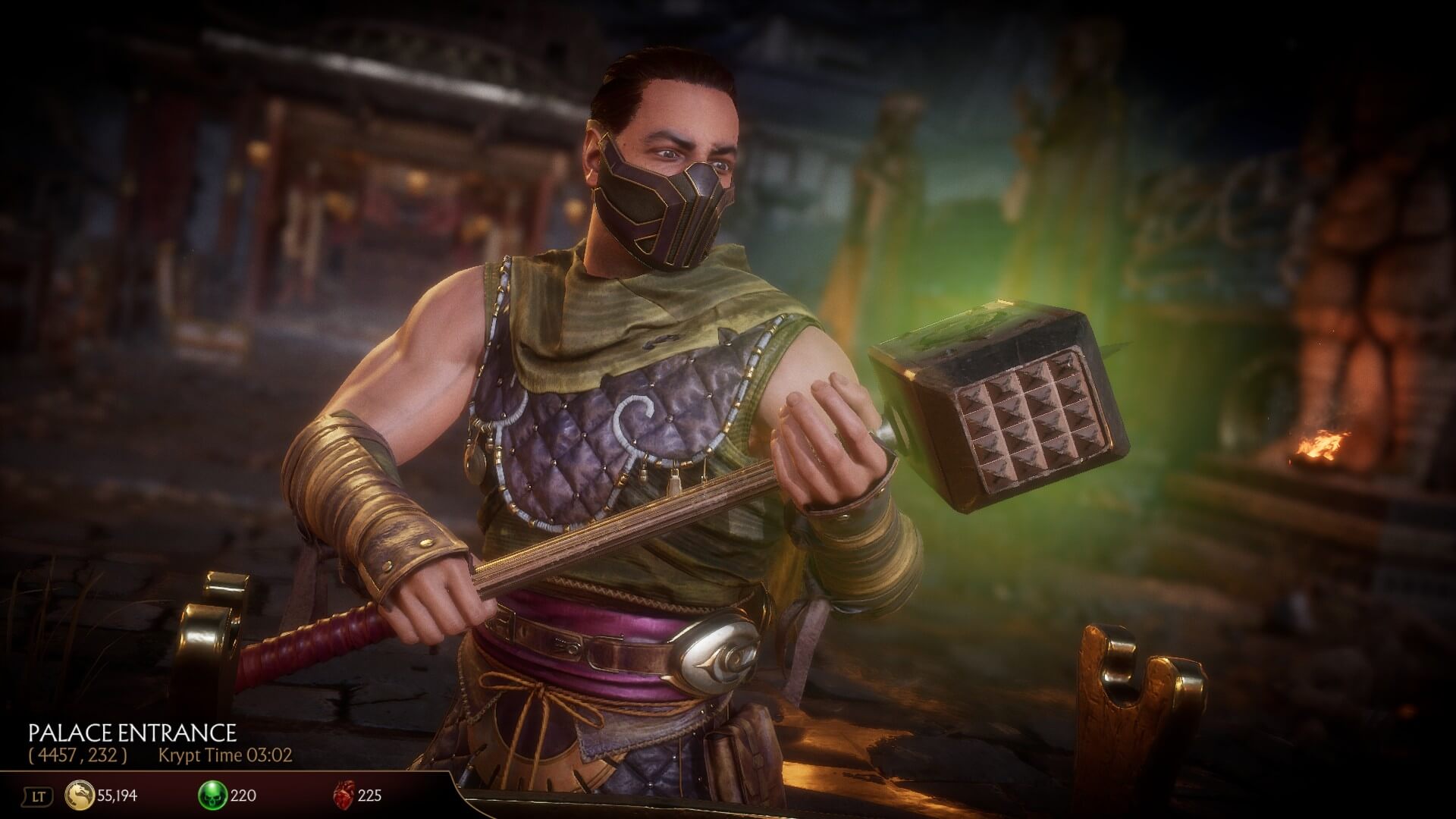
The Krypt is back again, of course. This time the event plays out on Shang Tsung’s island (see MK 2011) during which you open chests, smash vases and pulverise meteorites for some sweet loot and unlockable goodies. This mode now adopts a third person perspective which only makes the act of swinging around Shao Kahn’s colossal hammer at vases and statues all the more gratifying.
This new perspective in Krypt mode has enabled the developers to experiment with bit of light puzzle solving which adds another method of collecting some treasures. Altogether, the new adjustments add a surprising dimension of fun to this game mode and I wonder why they were not introduced in earlier iterations. The multiple currencies, however, are a huge step backwards, but I will touch on this niggle towards the end.
Kompletely Unreal
I have never been shy to express my admiration for the Unreal Engine, but what Netherrealm has achieved on a visual level in this game is outright astounding. Here we have a super modified version of the Unreal Engine 3 no less throwing around particles and rendering high definition textures like it is trying to put Frostbite and Unity out of business.
Even though certain sections of the game have been mysteriously capped at 30fps (most of which can now be fixed by a mod), this game flows on the PC like butter down a centrefold’s butt cheek. In contrast to Mortal Kombat XL, the vibrant graphical tone of MK11 really throws the bountiful details of the visuals into sharp relief. I feel like the unique cast of characters that has become so inimical to this series finally get the level of representation they deserve.
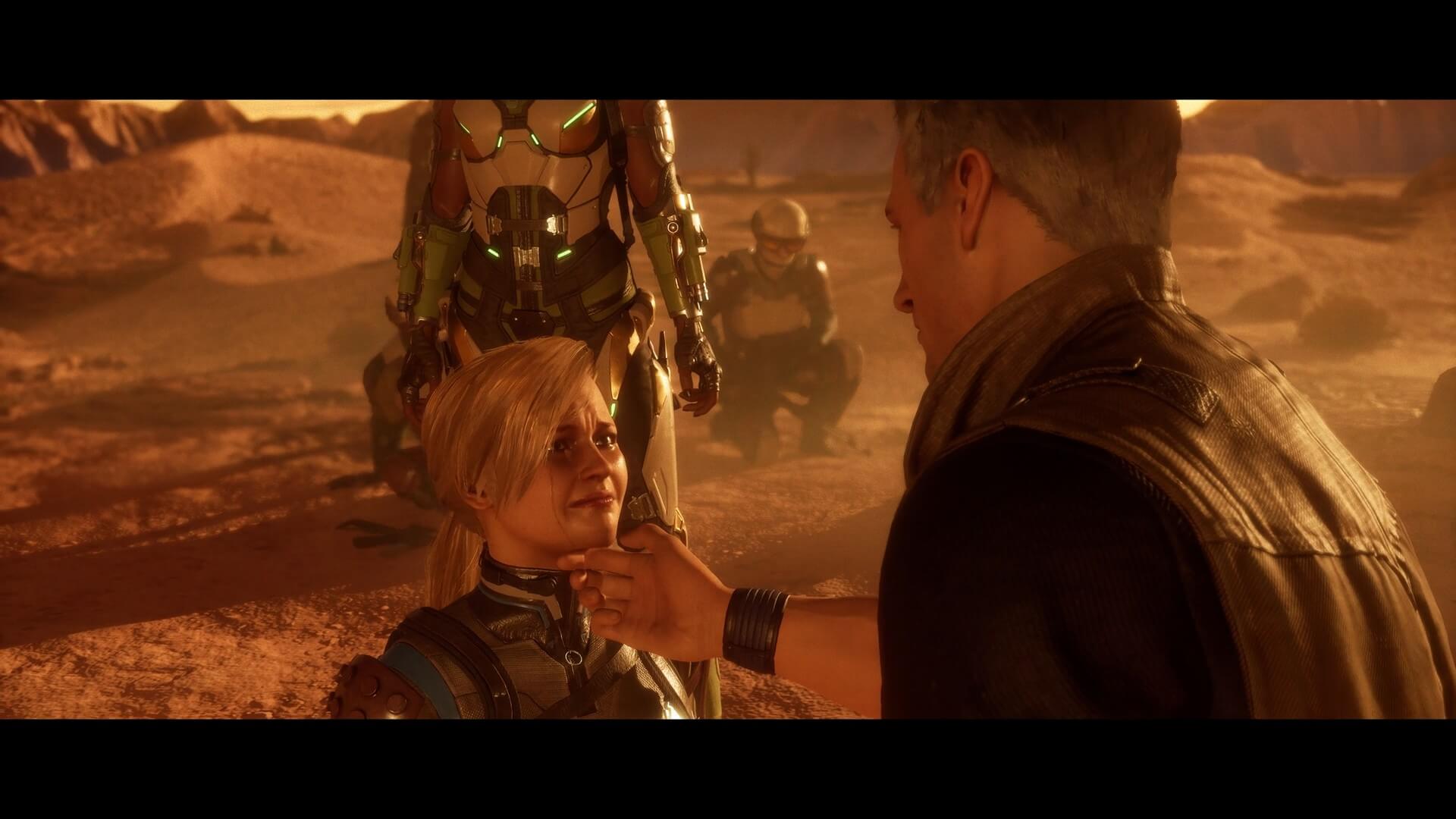
The environments and fighting arenas have also been given the deluxe visual package through dramatic lighting and environmental effects. I found the arenas to have an enigmatic and refreshing feeling to them, and a particular favourite of mine became the decaying Shaolin temple where the corpses of dead monks observe your match. I clearly have issues…
They are noticeably the tightest fighting planes that Netherrealm has implemented within one of their games, but this has the pleasing outcome of making the action feel closer and more immediate akin to the older Mortal Kombat games. This close-quarter style of combat places more importance on finding openings in the opponent’s technique rather than just chaining one combo to the next.
To be clear, combos are still just as important, but it is obvious that MK 11 wants shorter, more potent moves to play a bigger role. This means that the guy with the supersonic thumbs you always get paired with online is not as safe as he thinks this time round. You know who you are!
The fatalities and other post-match tomfoolery have, naturally, also been given an obvious graphical upgrade. Seriously, seeing brains being splattered and bones being shattered in this level of realism is not at all for the faint of heart. Be that as it may, I still have a hard time imagining a more beautiful, and delightfully visceral, fighting game.
The very definition of fighting chance
As I mentioned, the roster of fighters is a mixed bag of old and new characters (including the original 7), but like all the other yobs on the internet, I have my own objections to those that make a conspicuous absence. Where the hell is Goro!? Heck, where is Sheeva? I also miss Takashi who had a snappy and responsive touch to his fighting that appealed to my playing style in MK XL.
Perhaps Goro will get his chance with DLC, but the basic roster is still a bit smaller than I would have liked. It is once again too obvious that most of us will be expected to fork out more of our hard-earned cash for extra content later down the line. Netherrealm may have chosen quality over quantity, but this rather anemic selection just smacks too much of leaving room for microtransactions.
At least Geras more than makes up for my four-armed favourite being conspicuously M.I.A. His time-travelling abilities allow him to execute a punch, blink back in time, and execute another attack before my opponent could even find a moment to move. I also liked the beefy, warlock look he had going on which comes off particularly slick during fights. Definitely my favourite new character in this game.
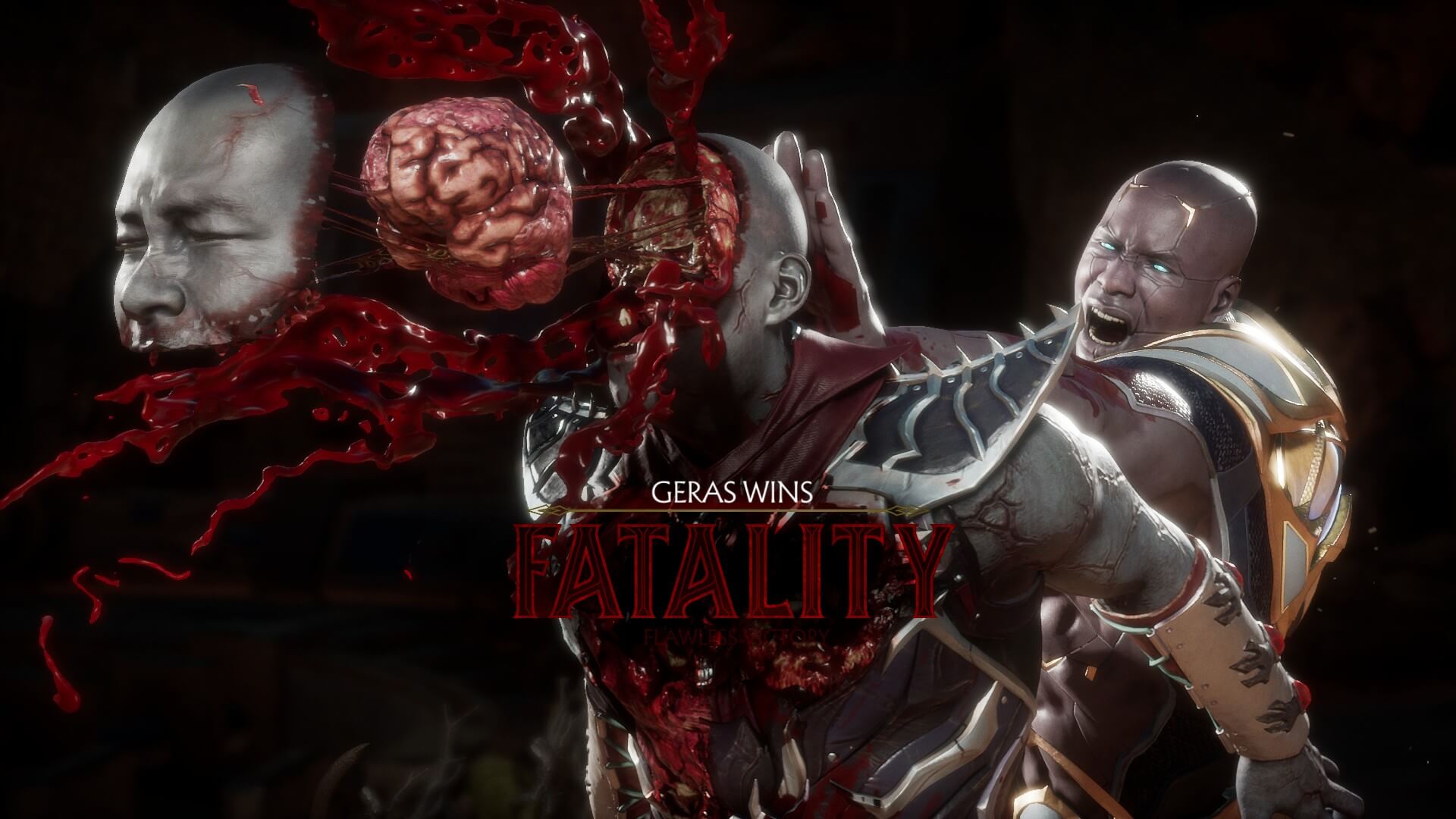
Also alleviating my discontent is that the developers have really gone the extra mile to give MK 11 a truly comprehensive and helpful tutorial segment. They even included a lesson on frame times and hit advantages – something I usually ignored and left to subconscious strategy until I actually paid more attention after the tutorial.
Best of all, for the really nasty combos and longer assaults the game can actually demo the move on screen with button prompts. I am embarrassed to admit that some combos in previous games took me nearly an hour to get right. With this new system, it was ten tries tops. As such, newcomers to Mortal Kombat, and fighting games in general, will undoubtedly feel more welcome than ever before.
On the subject of techniques, MK 11 has swapped out X-ray moves for a new system called ‘Fatal Blows’. Like X-ray attacks, they are once-off, deadly attacks taking you microscopically close to your, or your opponent’s, cracking jaw and rupturing internal organs. Except there is one, crucial difference: Fatal Blows can only be activated in the last third of your health bar.
In other words, if one player has only been maintaining a slight lead with their opponent throughout the fight, the final section becomes indescribably tense. You can no longer rely on short-distance techniques or longer combos to win because if you allow for even one opportunity to have a Fatal Blow performed on you, you’re toast. While this is hardly a major innovation from X-ray Blows, it shakes things up just enough to feel refreshing yet familiar.
Let us have the talk
So what exactly is the deal with this grind getting everyone all upset? Well, the manner in which MK 11 deals with in-game currency makes me gather my raincoats for the inevitable microtransaction storm that is surely going to hit soon. At the time of writing, MK 11 has, in all fairness, very little to offer in the way of DLC on Steam.
Still, something tells me that this will change soon not just because this is the capitalist inclination of our industry, but because fighting games represent particularly lucrative opportunities for monetisation. This has always been the case because seeing all the available fighters on your roster is just so satisfying. The ability to add some of our own cosmetic personality onto the characters only makes our wallets itch more.
This emphasis on unlocking stuff and multiple currencies is my only major issue with MK 11 because it feels like there is simply too much being gated off from the player from the start. This was never necessary in previous entries, and seeing it here gives the game that unpleasant whiff of a free-to-play mobile game.
Every time I completed a fight, the game goes through a huge pomp and circumstance to inform me of all the different currencies I just earned. Not that the handouts are even that generous mind you (or that I cared). There are not just ‘Koins’ used to unlock outfits, fatalities and modifiers for tower modes. Even in the Krypt, you now have to juggle multiple kinds of currency units like hearts and soul fragments if you want all off the riches from the hidden content.
(Oh, and the Krypt chests are randomised so your friend may find a sexy metal suit for Sonya Blade in the same place you get concept art… sorry…)
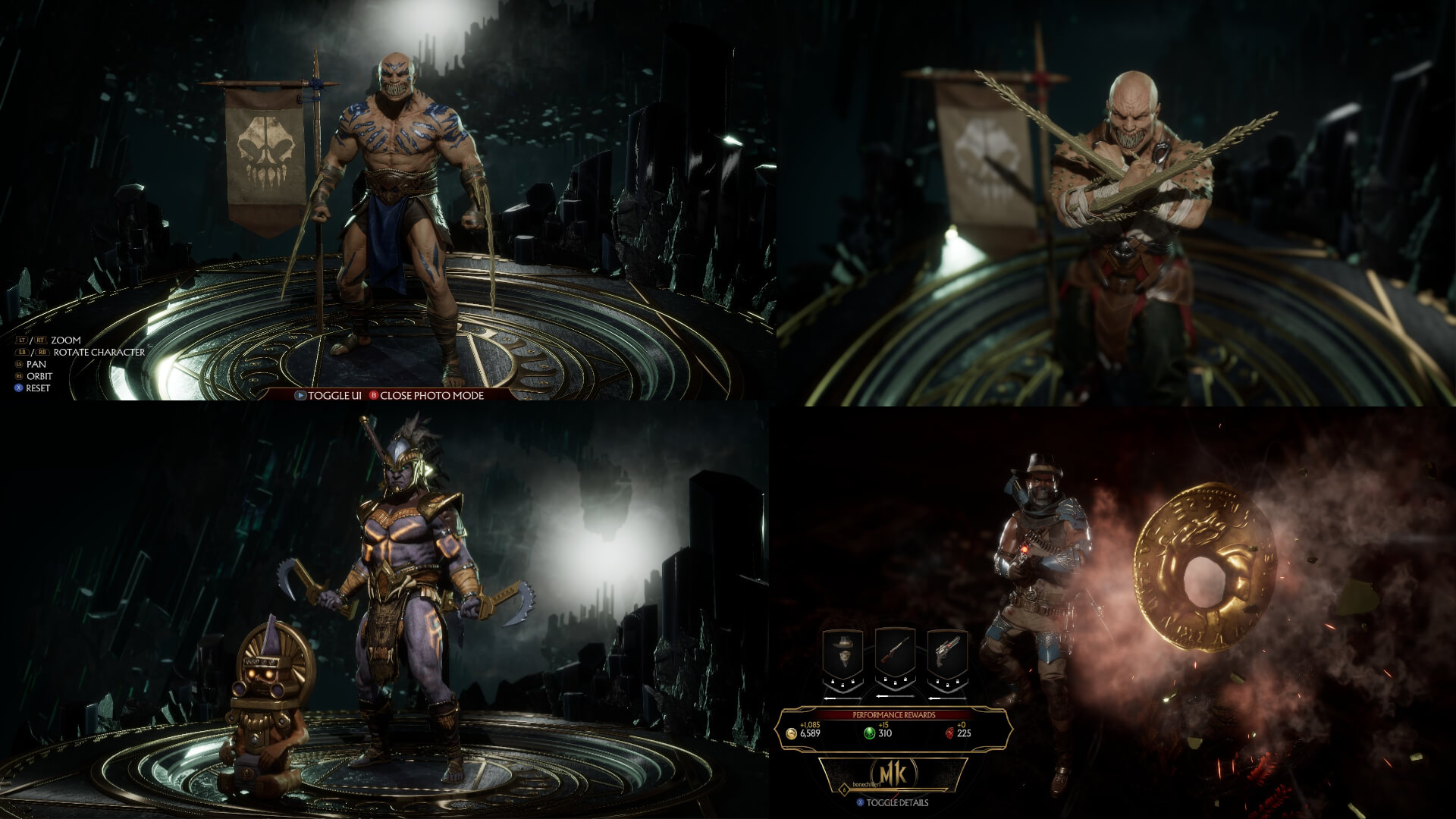
I have never been a big on cosmetic items in the games I play, so admittedly it affects me a bit less. However it is impossible to ignore the sense of gaminess MK 11 creates with this excessive abundance of unlockable content, or with the endless pop-ups informing me how much I have earned. I am playing because I am having fun, and this just feels like Netherrealm is trying to force me into some scheme inevitably leading to microtransactions.
FINISH IT!!
In case that last section threw you off a bit, I want to state again that Mortal Kombat 11 is, for the most part, fighting perfection. This game is completely saturated with the kind of creative vision that lives in the core of my favourite fighting games. This game looks great, sounds great and feels great making this 27-year-old I.P. nearly as impressive today as the moment it first filled the arcades.
If Netherrealm vow never to turn the superfluous currencies online into an evil plot of monetisation, I will not need another fighting game for the next ten years at least. Unlikely as that may be, this will nevertheless become an essential classic in your Mortal Kombat collection.
Remember to check out our Mortal Kombat 11 performance analysis!
![]()
- Tight and refined combat
- Tutorial section
- Story
- Excellent visuals and sound
- Design of new fighters
- Temporal fighting abilities
![]()
- Somewhat limited roster
- Too focused on currencies
Playtime: About 28 hours total. 10 hours on the single player campaign with much of the remaining time spent online.
Computer Specs: Windows 10 64-bit computer using Nvidia GTX 1070, i5 4690K CPU, 16GB RAM – Played using an Xbox Controller (Thanks to my friend Niel for lending me his!!)
Pieter hails all the way from the tip of southern Africa and suffers from serious PC technophilia. Therapists say it is incurable. Now he has to remind himself constantly that gaming doesn’t count as a religion even if DRM is the devil. Thankfully, writing reviews sometimes helps with the worst symptoms.

